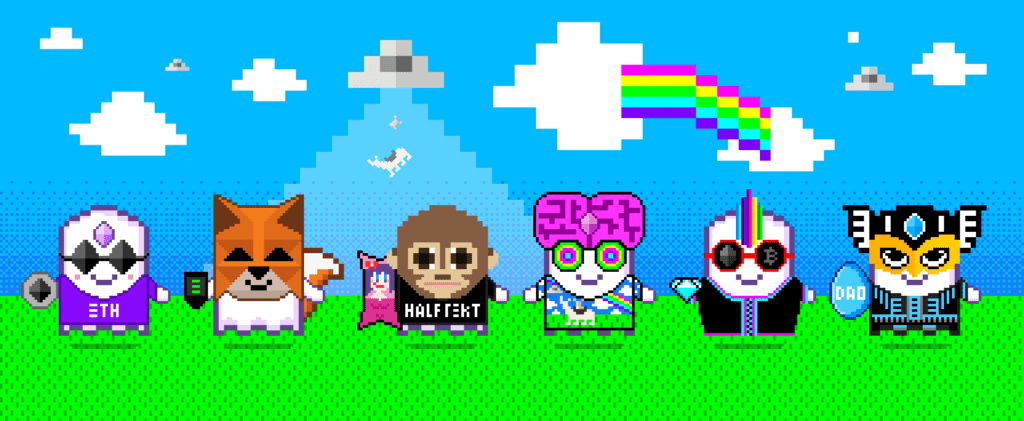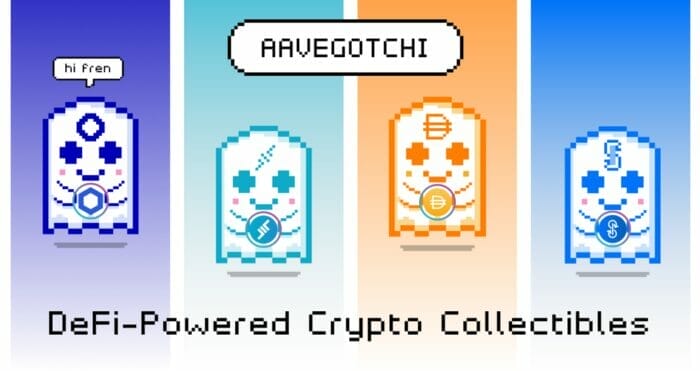‘90s kids will never forget the enduring appeal of digital pets. Over the past 25 years, Bandai has sold over 82 million Tamagotchis, and while the new Tamagotchi Pix is marketed to kids, it’s most likely to land in the hands of millennials.
But what do you get when you combine digital pets from the past with NFTs from the future? The answer is Aavegotchi, a community-owned blockchain game using Chainlink VRF on the Polygon mainnet to randomly generate on-chain collectible ghosts (Aavegotchis) with cryptographic proof of unique features like personality traits, kinship scores and visual elements.
Jesse Johnson is the founder and COO of Pixelcraft Studios, the team behind Aavegotchi. He said that while the overwhelming majority of NFTs on the market today store visual elements either on normal web servers or decentralized cloud solutions, Aavegotchis stand apart because they’re 100% on-chain – an important distinction when it comes to future-proofing NFTs.
“The degree to which an NFT is on-chain is one of the most important points to consider when assessing one’s ability for longevity, and the market will only come to recognize this more and more,” Johnson said.
After co-founding Mintable, Ethereum’s first NFT no-code minting solution, in 2018, Johnson said he was inspired to start creating NFTs with on-chain utility. This culminated in a “big shift” from static NFT collectibles to Aavegotchi’s dynamic gaming experience.
The recent launch of Chainlink VRF on Polygon allowed Aavegotchi to significantly scale its use of VRF to enhance gameplay while ensuring that anyone playing the game has a fair, tamper-proof chance to earn provably rare Aavegotchis.

VRF plays a central role in debuting new Aavegotchis. The process begins when users acquire a Portal NFT. Opening the Portal door engages Chainlink VRF to fire a randomization sequence that instantly generates 10 unique Aavegotchis. Once a user chooses or “summons” one Aavegotchi, the other nine disappear.
While forgetting to pick up Tamagotchi poop is a ubiquitous experience, Aavegotchi owners have numerous incentives to regularly interact with their Aavegotchis. Personality traits are dynamic and can be “nudged” by earning XP. A well-nurtured Aavegotchi boosts its owner’s influence in Aavegotchi’s metaverse, “The Realm,” as well as in DAO voting.
Johnson said there’s exciting news on The Realm’s horizon. In the near future, an “arcade” will be home to the most creative and well-implemented mini-games built around Aavegotchi smart contracts. “Because of Aavegotchi’s extremely open-source nature, we are seeing an explosion in the number of developers that are coming in to build with our NFTs,” he said.
For Johnson, Aavegotchi’s virtually endless opportunity to scale and create new content represents the most exciting facet of NFTs, which he described as “the first true digital property.”
“We live in an increasingly digital world and so there’s nowhere I’d rather invest my energy than in the digital equivalents of currency and now property as NFTs. When it comes to NFTs, DeFi and sources of truth, we’ve only just begun to scratch the surface.”
To learn more about Aavegotchi, check out their website, Twitter, Discord, Wiki, Medium, Telegram and Reddit.
Read more about Chainlink’s latest integrations here.
Elizabeth Licorish is a writer and author whose work has appeared in HuffPost, PhillyVoice and Bustle. In 2008, she wrote and co-authored Innovation for Underdogs. In 2010, she wrote and edited Charles Manson Now. She received her MFA in creative nonfiction from Rutgers University and has ghostwritten hundreds of executive thought leadership pieces for some of the world’s leading experts across diverse industries. She has been writing and editing for influential blockchain projects since 2017, when she fell in love with decentralized finance’s potential to empower individuals in an economically just world. As the editor-in-chief of Chainlink Today, she’s passionate about telling the human stories behind some of the most promising technology in the fastest-growing blockchain ecosystem.


